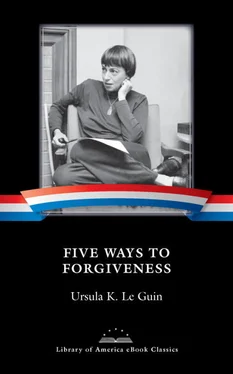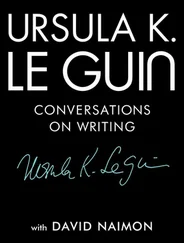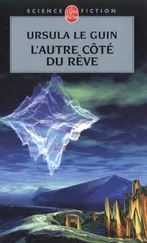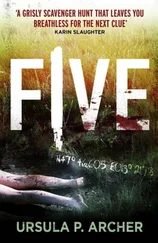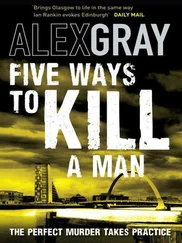1930
Parents buy a ranch in the Napa Valley, later named Kishamish from a myth invented by brother Karl. Family will spend summers there entertaining visiting scholars, including physicist J. Robert Oppenheimer and both native and white storytellers.
1931
Juan Dolores, a Papago Indian friend and collaborator of A. L. Kroeber’s, spends the first of many summers with the Kroeber family at Kishamish.
1932–1939
Is taught to write by her brother Ted and goes on doing it. Ursula and Karl, along with Berkeley neighbor Ernst Landauer, invent a world of stuffed animals. Later discovers science fiction magazines, including Amazing Stories . Father tells her American Indian stories and myths; she also reads Norse myths. Mother later recalls, “The children wrote and acted plays; they had the ‘Barn-top Players’ in the loft of the old barn. They put out a weekly newspaper.”
c. 1940
Submits first story to Astounding Science Fiction and collects her first rejection letter.
c. 1942
With her brothers in the armed services (Clifton joins in 1940, before the war starts for America, Ted in ’43, and Karl in ’44), Ursula is left without imaginative co-conspirators. In a later interview she recalls, “My older brothers had some beautiful little British figurines, a troop of nineteenth-century French cavalrymen and their horses. I inherited them, and played long stories with them in our big attic. They went on adventures, exploring, fighting off enemies, going on diplomatic missions, etc. The captain was particularly gallant and handsome, with his sabre drawn, and his white horse reared up nobly. Unfortunately, when you took one of them off his horse, he was extremely bow-legged, and had a little nail sticking downward from his bottom, which fit into the saddle…. So my brave adventurers lived entirely on horseback. Also unfortunately, there were no females at all for my stories; but when I wrote the stories down, I provided some.”
1944–46
In fall, begins attending Berkeley High School. Socially marginal, a good student, reads voraciously outside school, Tolstoy and other nineteenth-century writers, including Austen, the Brontës, Turgenev, Dickens, and Hardy, as well as the Taoist writings of Chinese writer Lao Tzu. Her mother introduces her to Virginia Woolf’s A Room of One’s Own and Three Guineas , which she says she didn’t really get until much later. In spring 1946, father retires from Berkeley. Parents travel to England, where father receives the Huxley Medal from the Royal Anthropological Institute.
1947
Graduates high school in class of 3,500, which includes Philip K. Dick. The two never meet, although they later correspond. Father accepts a one-year appointment at Harvard University, and it is decided that, with parents nearby, Ursula will attend Radcliffe College instead of the University of California. Spends summer with parents and Karl in New York City, where father teaches at Columbia University until Harvard appointment begins. They rent an apartment from parents’ friends near 116th and Broadway and spend the summer seeing many plays and Broadway shows. Takes recorder lessons with Blanche Knopf. Moves to Radcliffe in the fall. Lives last three college years in Radcliffe cooperative Everett House with close friends Jean Taylor and Marion Ives.
1948
Father returns to Columbia, where he will teach until 1952. Spends summer with parents in New York City, this time in another apartment rented from parents’ friends, near 116th and Riverside Drive.
1950
A relationship in her senior year at Radcliffe results in an unplanned pregnancy; an illegal abortion is arranged with the help of friends and parents.
1951
Elected to Phi Beta Kappa. Graduates cum laude from Radcliffe in June, writing a senior thesis titled “The Metaphor of the Rose as an Illustration of the ‘Carpe Diem’ Theme in French and Italian Poetry of the Renaissance.” College acquaintances include John Updike, who marries one of her housemates. Travels to Paris with Karl and begins writing novel A Descendance , about the imaginary Central European country of Orsinia, whose name reflects her own: both come from the Latin word for “bear.” Starts graduate work at Columbia in the fall. Begins writing and attempting to publish poetry and stories. Father helps her submit poems for publication, mailing her submissions and also investigating subculture of little magazines.
1952
Completes an M.A. in Renaissance French and Italian language and literature at Columbia University, writing a thesis titled “Ideas of Death in Ronsard’s Poetry” on the sixteenth-century French poet Pierre Ronsard. Begins work on a doctorate at Columbia on the early sixteenth-century poet Jean Lemaire de Belges. Submits A Descendance to Alfred Knopf, a friend of her father’s, and receives an encouraging rejection letter. In a 2013 interview, Le Guin will recall that “the first novel I ever wrote was very strange, very ambitious. It covered many generations in my invented Central European country, Orsinia. My father knew Alfred Knopf personally…. When I was about twenty-three, I asked my father if he felt that my submitting the novel to Knopf would presume on their friendship, and he said, No, go ahead and try him. So I did, and Knopf wrote a lovely letter back. He said, I can’t take this damn thing. I would’ve done it ten years ago, but I can’t afford to now. He said, This is a very strange book, but you’re going somewhere! That was all I needed. I didn’t need acceptance.” Begins writing new Orsinian novel called, variously, Malafrena and The Necessary Passion .
1953
Receives a Fulbright Fellowship to study in France. Departs from New York on September 23 on the Queen Mary . On the ship she meets fellow Fulbrighter Charles Alfred Le Guin (born June 4, 1927, in Macon, Georgia), who is writing his thesis on the French Revolution. On December 22, marries Le Guin in Paris after numerous delays in procuring a marriage license—later says there was “always another tax stamp we needed across the city.” (On the marriage license, a space between “Le” and “Guin” is restored, in a surname that had not had one in America.)
1954
Le Guins return to U.S. on the Ile de France ship in August. Ends graduate work and the Le Guins move to Macon, Georgia, where Charles teaches history and Ursula teaches freshman French at Mercer University. Meets Charles’s large extended family. Sees, and is first puzzled and then appalled by, her first sign for a “Colored Drinking Fountain.”
1955
Completes first version of novel Malafrena . Works as a physics department secretary at Emory University in Atlanta, where Charles is completing his Ph.D. Reads The Lord of the Rings .
1956
Charles receives his doctorate from Emory and they move to Moscow, Idaho, where they both begin teaching at the University of Idaho. Out of boredom in a rather insular community, together with friends they fabricate items about an imaginary poetry society (including poems by Le Guin’s alter ego Mrs. R. R. Korsatoff) and succeed in placing them on the society page of the local newspaper.
1957
Oldest child Elisabeth Covel Le Guin is born, July 25.
1958
Moves to Portland, Oregon, where Charles takes up position as professor of French history at Portland State University (then College). They buy a Victorian house below Portland’s Forest Park, where they will live for the next six decades.
Читать дальше
